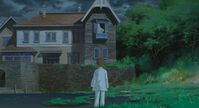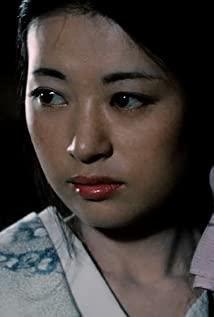.
But personally, I don't hate such a change.
In the past Ghibli, whether it was a miserable life experience or a harsh environment, the protagonist was full of positive energy, even if it was desperate, it was only temporary. Grandpa Miyazaki probably wants to give us the courage to face the real world through the so-called dreamlike innocence of children. As for environmental protection, here is the table below.
And this animation is probably the first time in Ghibli history that such a gloomy protagonist setting has been used. An adopted daughter, because of her asthma, secretly discovered government subsidies, etc., began to doubt her existence, denying her parents, others, and even herself. I have to admit that although this kind of psychological setting is always a bit of scorn and fuss, it really exists in the childhood of many children, including myself.
The minds of children are very small, and a little clue can cause great anxiety. Many children who have lost their sense of security will also subconsciously cover up. The vicious circle will naturally get deeper and deeper, eventually forming a self-loathing character. I feel that the character shaping this time has obviously become grounded. From looking at nature to looking at society, whether Ghibli is evolving or degenerating, it is still not easy to make a conclusion.
When I saw the middle section, I guessed that this is just a psychological phenomenon called "childhood playmates". Many of these situations happen to children who lack companionship or have low self-esteem and lose their sense of security. They will fantasize about another playmate, who will usually be the same age and everything opposite to themselves, so as to make up for the psychological deficiency. Mani, who is blond and has a proud family, fits the description of such symptoms.
It's a pity that I can guess the beginning, but I can't guess the end [laugh. In fact, Mani is more like an illusion that combines the "childhood playmate" and the memory of being loved. Although the protagonist hates himself and denies the care and love of others, he still wants to be loved and understood subconsciously. In the forgotten memories of childhood, the impression of the mansion and the feeling of being loved by Mani finally contributed to the appearance of "Mani". [I will subconsciously be labeled as Nima every time. . It's painful. . .
In the end, through various explorations, verifications and other people's narration, the story of the year was finally restored, and the protagonist's heart knot has been opened since then, so that she can once again frankly accept the love of others and truly feel loved.
This kind of thing is easy to say, but in reality it is very difficult to operate, and it can easily backfire. Because many children will deliberately avoid or distort the love of others while closing themselves, and even refuse to understand the meaning behind others' caring for themselves. At this time, positive guidance will become difficult and even deepen misunderstandings. But if you leave it alone, it is likely to cause a lack of personality in adulthood, and lose the ability to love others in some ways, because you can't feel loved.
Of course, the above are just a little bit of insights from a non-professional person like me. If there are any different opinions
, I can put them forward~ All in all, I like this work very much, and I cried into a fool at the end. . .
I don’t think this attempt of Ghibli can be called a failure. When the old and the new are changed, the change is welcome. If you can perfectly inherit the style of Grandpa Miyazaki, I think it would be a little scary. . .
One last word, this time I also have the "Last Ghibli" flag. Why do I always feel that I have heard this term several times. . . Please do not make trouble, please make persistent efforts. . . .
View more about When Marnie Was There reviews










